You are 39 Weeks and 3 Days 4 days to go…
The inquiries may
begin flooding in this week and it will feel as though the whole world
is awaiting news of your baby’s arrival.
Your baby today
Once labor starts your baby will no longer have room to place
her hands on top of her head or by her face although, interestingly, she
is still moving around—you probably won’t notice these movements since
you will have other things on your mind.

In this final week of your pregnancy,
the weight of expectation can be immense. It can feel as though
everyone is waiting for you to pop, especially if it’s your first baby.
You’ll no doubt cope with
it this week—and you may even enjoy getting all the attention—but if
you happen to go overdue you might get frustrated by the constant calls
and by having to repeat yourself. Try to be patient and remember people
are simply excited for you and are just as frustrated with waiting as
you are.
Matters aren’t helped by
the due date. Everyone will have this estimated date in mind, but
unfortunately not many babies stick to a schedule and they enter the
world exactly when they are ready (see You are 38 Weeks and 2 Days).
Up to 42 weeks isn’t really considered that late in medical circles. If
it all becomes too much, rely on others close to you to field all the
calls and make it clear that you promise to be in touch with an
announcement just as soon as there is any news.
Text messaging
can be a useful way of staying in touch with people in the final days.
Sending out a circular “baby hasn’t arrived yet” message is a good idea.

… Doctor
| Q: |
Is it worth paying extra for a private room when I’m in the hospital?
|
| A: |
This is entirely up to you. It is expensive; it can cost a few
hundred dollars a night, but some women find it money well spent. In
addition to giving you more privacy and private time to bond with your
new baby and your partner, a private room will be quieter, and you won’t
have as many interruptions, since you won’t have medical staff coming
in to treat a roommate. A private room can also make a difference in
getting good rest at night, especially if you are a light sleeper.
|
… Your body
False labor
You may experience deep and painful twinges,
and practice contractions, known as Braxton-Hicks’, particularly toward
the end of pregnancy. It’s easy to mistake these for the real thing,
and you may find yourself rushing to the hospital when your body is
really still practicing. You may also experience regular contractions
for a period, which then stop. All of this is normal.
One sure sign that labor is imminent is that you lose your mucus plug ,
another is your water breaking. In some cases, however, neither of
these events takes place until labor is established, so don’t panic if
they don’t happen to you.
You’ll definitely
know you’re in labor when your contractions are occurring regularly,
approximately every 15 minutes—time the gap between them. True
contractions will get longer, stronger, and closer together as time goes
on, and won’t go away when you walk around or change position.
You are 39 Weeks and 4 Days 3 days to go…
Don’t be too concerned if your baby hasn’t engaged yet since this won’t have any bearing on the final delivery date.
Your baby today
This image shows that even at this time your baby will be able
to reach down and touch her toes (see the foot on the right and the hand
on the left). Because there is less space your baby will no longer be
able to place her feet on top of her head.
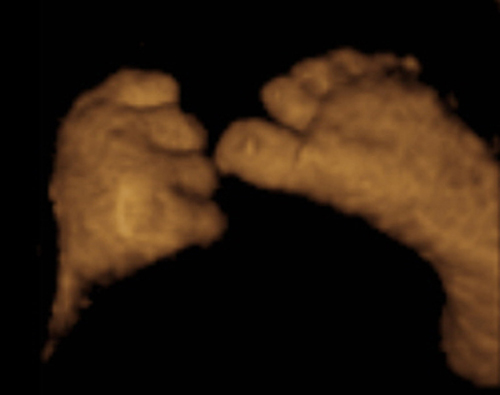
There are many reasons why
your baby may not have engaged yet: the shape of your pelvis may mean
that you need the pressure of the contractions to get the baby’s head to
engage. Very athletic women tend to have babies who engage late because
their taut muscles hold the baby in a different position. Second and
subsequent babies tend to engage later because the abdominal muscles are
very loose, so the baby may move freely without feeling any need to get
her head down. A big baby may not descend into the pelvis until the
contractions start.
How your baby is positioned
Once the baby is head down and moves into the pelvis
there are several positions she may adopt: six of the most common are
shown below. The position is determined by where her back and occiput
(the back of her head) are lying. The most usual position is LOT. If the
baby is breech, the position is determined by how the bottom is lying.
LOT: left occiput-transverse
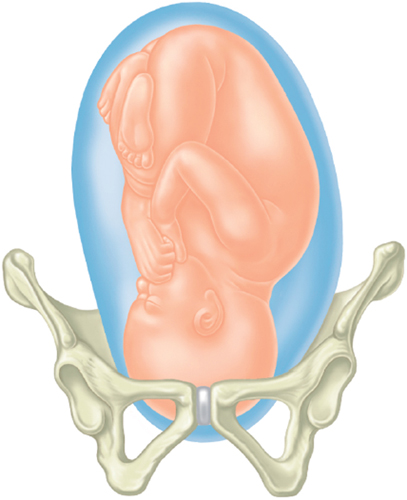
LOA: left occiput-anterior
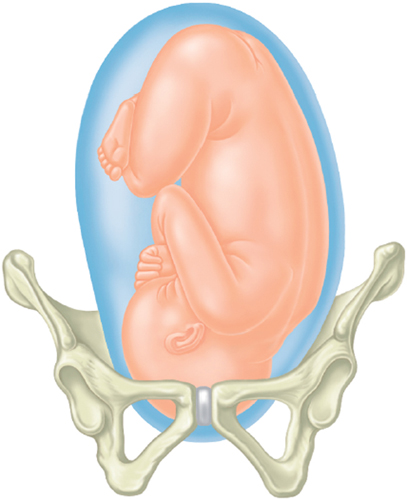
LOP: left occiput-posterior
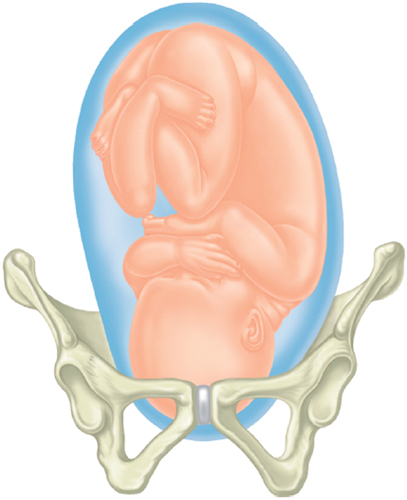
ROT: right occiput-transverse
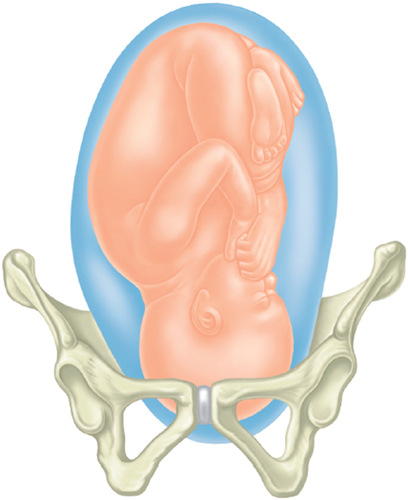
ROA: right occiput-anterior
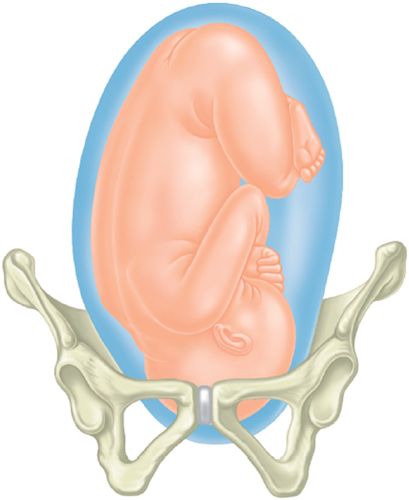
ROP: right occiput-posterior
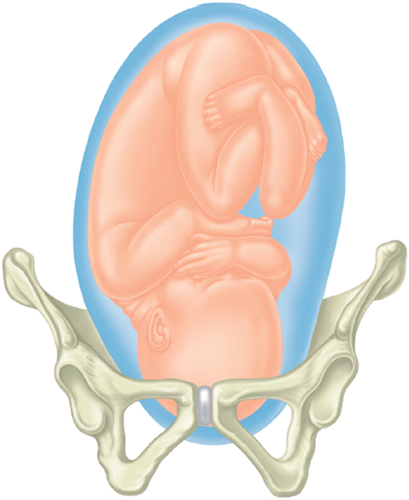
LOT (left occiput-transverse): the back and occiput are positioned on the left-hand side of the uterus at right angles to the spine.
LOA (left occiput-anterior): the back and occiput are positioned closer to the front of the uterus on the left-hand side.
LOP (left occiput-posterior): the back and occiput are toward the spine on the left-hand side of the uterus.
ROT (right occiput-transverse): the back and occiput are at right angles to the spine on the right-hand side of the uterus.
ROA (right occiput-anterior): the back and occiput are toward the front of the uterus on the right-hand side.
ROP (right occiput-posterior): the back and occiput are toward the spine on the right-hand side of the uterus.